Speaker
Description
Mini-EUSO is a telescope observing the Earth from the International Space Station since 2019. The instrument employs a Fresnel-lens optical system and a focal surface composed of 36 Multi-Anode Photomultiplier tubes, 64 channels each, for a total of 2304 channels with single photon counting sensitivity. Mini-EUSO also contains two ancillary cameras to complement measurements in the near infrared and visible ranges. The scientific objectives of the mission span from the search for extensive air showers (EAS) generated by Ultra-High Energy Cosmic Rays (UHECR) with a energies above 1021 eV, the search for nuclearites and Strange Quark Matter to the study of atmospheric phenomena such as Transient Luminous Events, meteors and meteoroids. Mini-EUSO can map the night-time Earth in the near UV range (predominantly between 290 - 430 nm), with a spatial resolution of about 6.3 km (full field of view equal to 44°) and a maximum temporal resolution of 2.5 μs, observing our planet through a nadir-facing UV-transparent window in the Russian Zvezda module. The detector saves triggered transient phenomena with a sampling rate of 2.5 μs and 320 μs, as well as continuous acquisition at 40.96 μs scale. In this talk we discuss the detector response, and the first results obtained in the mission so far.

